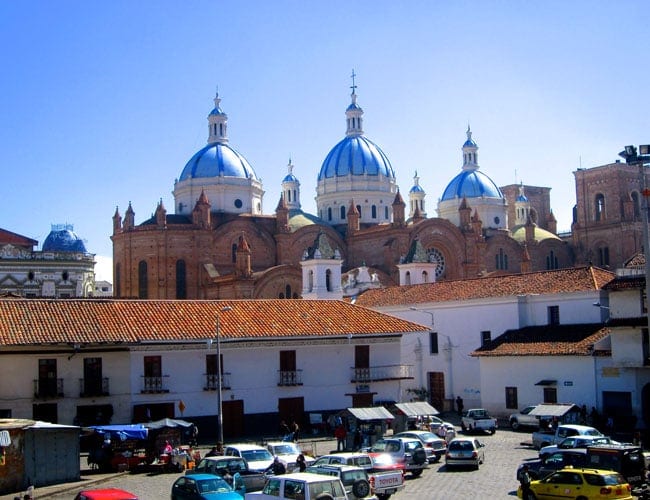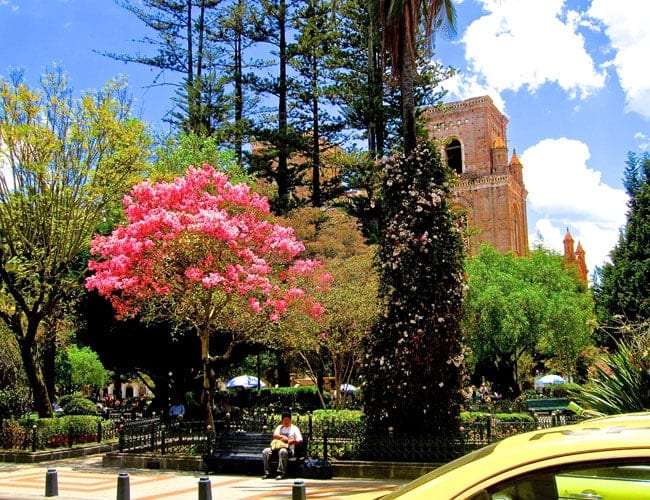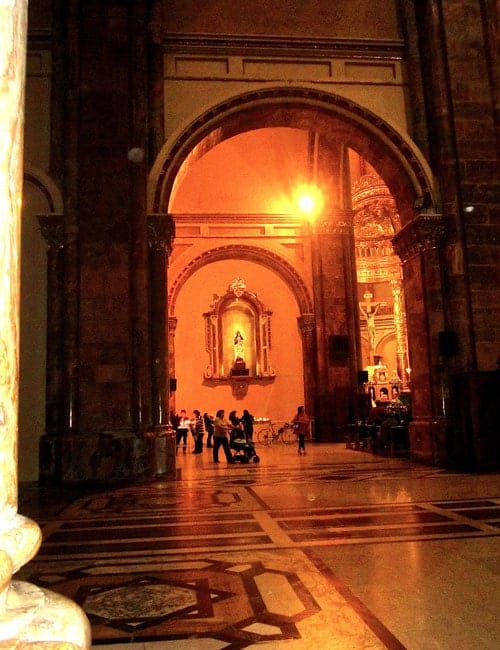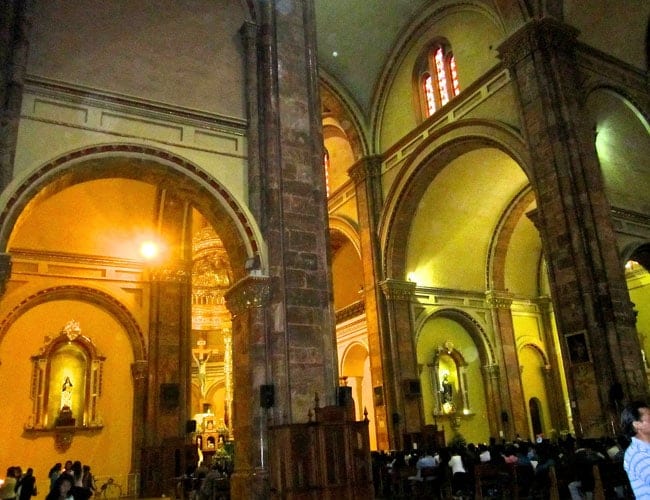
Among the Colonial Architectural treasures in Cuenca, are the Churches dating from the mid Sixteenth Century, when the powerful Inca Empire was conquered by the Spanish Conquistadores, a band of Conquerors known for their bravery and brutality. With the founding of Cuenca in 1557, the Conquerors began building Churches and set about converting the population to Catholicism. The indigenous artisans were naturally talented and when guided by their Spanish “rulers”, they were able to build some very beautiful places of worship, richly ornamented with religious iconography and ornately gilded alters. I have read there are fifty two Churches in Cuenca, one for each Sunday of the year – that is, if one wants to go to a different Church every Sunday !! It is these Churches that have survived through the Centuries that add so much character to the historic heart of Cuenca. Overall, the Cathedrals in Ecuador are exceptionally beautiful and I made a point to attend Sunday morning services every Sunday I was there.

The Old Cathedral
Cuenca has two Cathedrals located on Parque Calderon, the heart of the historic center, on opposite sides of the main square with hundreds of people going by. As beautiful as they are in the day, seen at night with illumination they take on an ethereal quality. The Old Cathedral, El Segrario, was built in 1557, the same year Cuenca was founded.

The New Cathedral.
When it became too small, a much larger Cathedral was planned. This is the New Cathedral, or its full name: the Cathedral of the Immaculate Conception. Construction was begun in 1885, and it took about eighty years to complete. Part of the problem was a lengthy delay, when work was stopped due to a miscalculation in the weight and height of the now famous blue domes. The style is predominantly Romanesque with references to Gothic (the windows) and Renaissance. It is an enormous cathedral and can accommodate over eight thousand people with an additional vault underneath for a further three thousand.

No expense was spared in its construction. The facade is Alabaster combined with local marble while the beautiful inlaid floors are pink marble imported from Carrara. Italy.

The tall vertical columns clad in pink marble add a linear element.

At the far end, dominating the interior is the ornate gold alter, resembling the one in Saint Peter’s in The Vatican, Italy, with twisted columns, heavily decorated and embellished with gold leaf.

The stain glass leaded windows were custom ordered and brought in from the Basque region of France. With all these custom details, it is not surprising the New Cathedrals took so long to complete.

The Iconic Blue Dome
Even more impressive than all of this are the iconic blue domes on the exterior of the New Cathedral, that are so closely identified with Cuenca. Covered in blue and white tiles imported for Czechoslovakia, they glint and shine in the sun and can be seen for miles around, symbolizing Cuenca more than anything else in the entire City.
The Sunday I was in Cuenca I found out the times of the Services at the New Cathedral. Arriving in time, the Cathedral was already filled to capacity as I carefully made my way to the front to be near the alter, so as not to miss any detail of the Service. The pageantry and vestments were worthy of this great Cathedral and I enjoyed the Mass so much that I stayed for the next one also. At the end of the service as one crowd exited, it filled up again with a totally different group of people. I do not know if it was filled to its capacity of eight thousand people, but it was full with standing room only. The Choir and musicians were young , sometimes singing together in harmony or doing solo turns. The voices were remarkable and the enjoyment of the musicians was contagious. There was a modern beat to their performances accompanied by an electric guitar and percussion instruments, reminding me at times of a Gospel Service.
Seeing this packed Cathedral, with mostly family groups spanning the generations, I was reminded that “the family that prays together stays together.” Family is very important in Ecuador and attending Sunday morning Mass re-affirmed this. Religion plays an integral part in everyday life in Ecuador and it seemed that people found peace and solace in the familiarity of the Cathedral, the Hymns and the Mass. There was a calmness and focus inside and for the duration of the service, nothing outside of those walls mattered.


